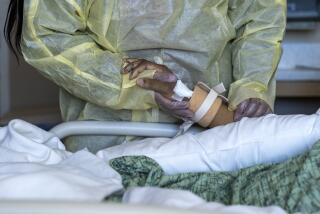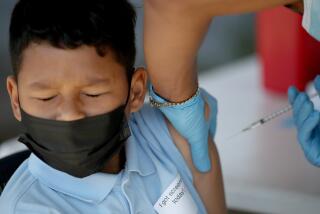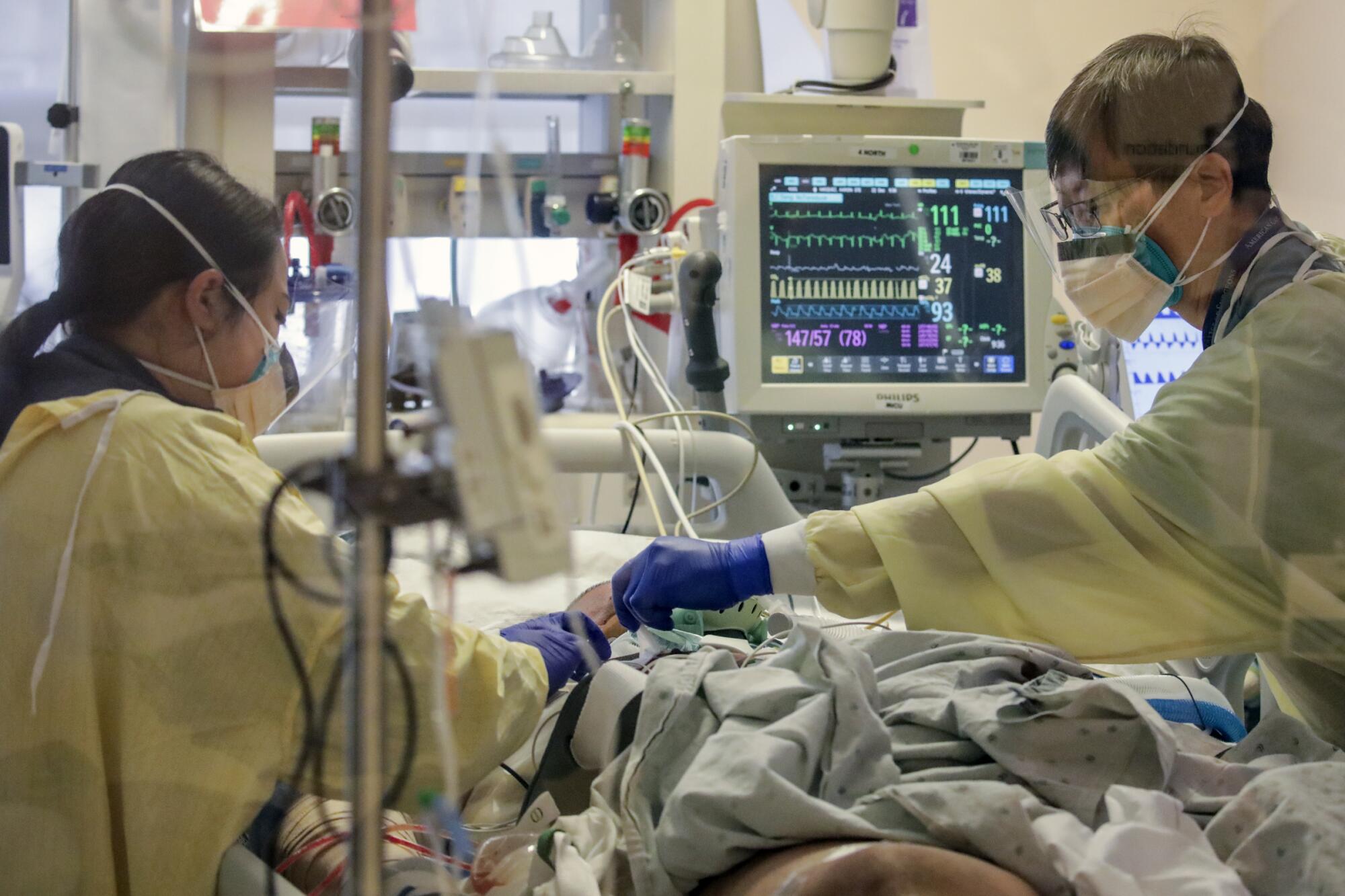
- Share via
COLTON — Nine patients awaited their fate in an intensive care unit at the Arrowhead Regional Medical Center.
The youngest was 26, the oldest 66. Four of them had already been intubated, a last-ditch effort to save their lives. Inside fourth-floor rooms bare of decor, they lay alone in the dark, flat on their belly and sedated because the pain of the tube running down their throat would be too great otherwise.
The number of COVID-19 patients in the unit on Wednesday morning was about double that of a couple of weeks ago. But this was a different kind of surge from last winter, when the hospital saw well over 100 COVID patients at its peak and had to create a makeshift ICU out of the post-anesthesia care unit.
Over the past seven days, the public hospital, which is run by San Bernardino County, has averaged 20 COVID-positive patients.
The number of hospitalizations was undeniably not as bleak as they were last winter, but there was a simmering frustration. All the ICU COVID patients, every single one, was unvaccinated.
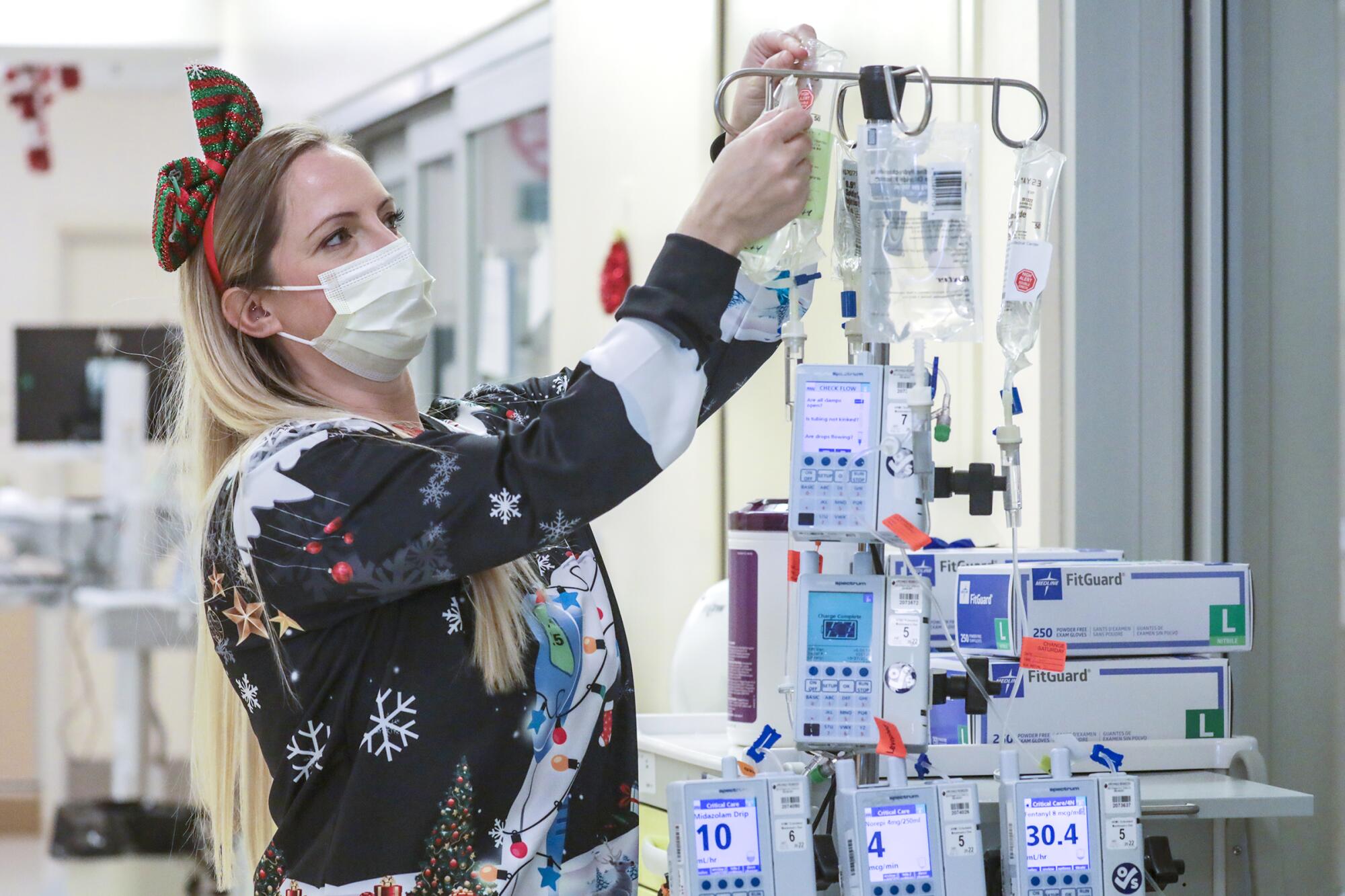
“It’s definitely frustrating, especially when now the vaccine makes it almost preventable to be in this state,” said ICU charge nurse Beth Koelliker, gesturing at the rooms behind her. On a recent Sunday, three people died.
The needlessness of it all, demoralizing.
“Patients are still dying at an alarming rate, all unvaccinated,” she said. “They haven’t stopped dying for two years. It’s hard to deal with that for so long.”
With the upcoming holidays and officials preparing for the spread of the highly infectious Omicron variant, healthcare workers worry about what’s coming. Already, Riverside and San Bernardino counties have seen a higher rate of COVID-19 hospitalizations than other areas of Southern California.
In San Bernardino County, only 59% of residents of all ages have received at least one dose of vaccine. The mortality rate among the unvaccinated in the county is nearly 10 times higher than for those who are fully vaccinated, according to county data.
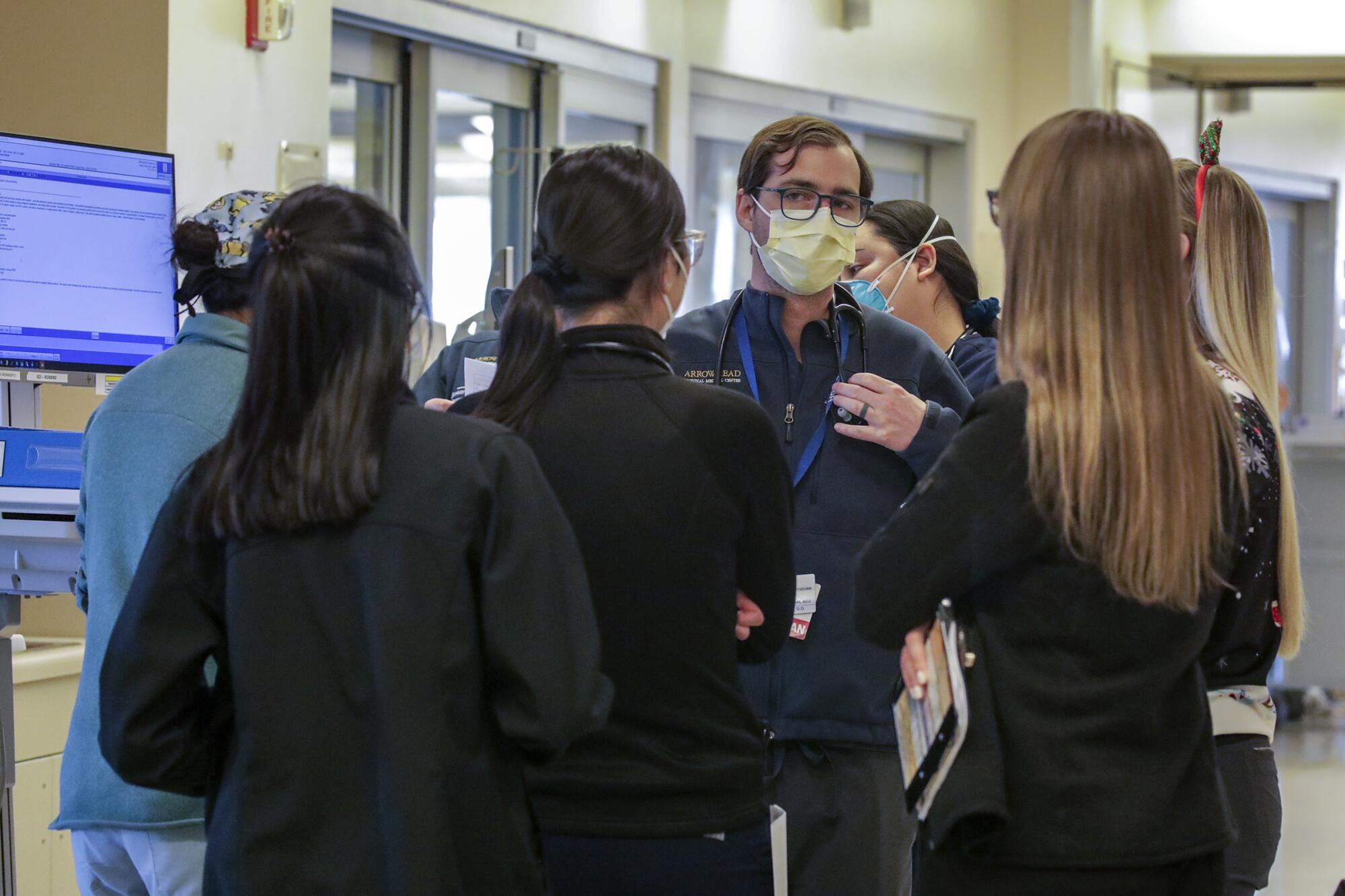
“It is a wake-up call for those still remaining unvaccinated, or those who have not yet gotten their boosters who are eligible to do so,” said Dr. Robert Kim-Farley, an epidemiologist and infectious-diseases expert at the UCLA Fielding School of Public Health. “The severe hospitalizations and deaths that are occurring now are virtually all preventable, had people simply gotten the vaccine.”
There were 25 COVID patients scattered throughout the Colton hospital on Wednesday. Of those, 16 were unvaccinated, the three vaccinated were asymptomatic, one was partially vaccinated and five had an unknown status. Many of them were housed on the fourth floor.
In 4 North ICU, more than 70 stockings were strung up along the windows on the recent Wednesday. The names of each staff member on the unit were printed at the top, above penguins, presents or snowflakes.
Nearby stood the tree that Zorina Hernandez, the critical care unit manager, had ordered on Amazon. Koelliker, a registered nurse, had come in an extra day to help festoon it with bows, tinsel and red, green and gold ornaments.
Koelliker brought cupcakes and holiday headbands to try to keep the mood light. She wore a sweater decorated with snowflakes, bells, a Santa hat and a thermometer that read 36.5 (in Celsius). It was her “ugly sweater.”
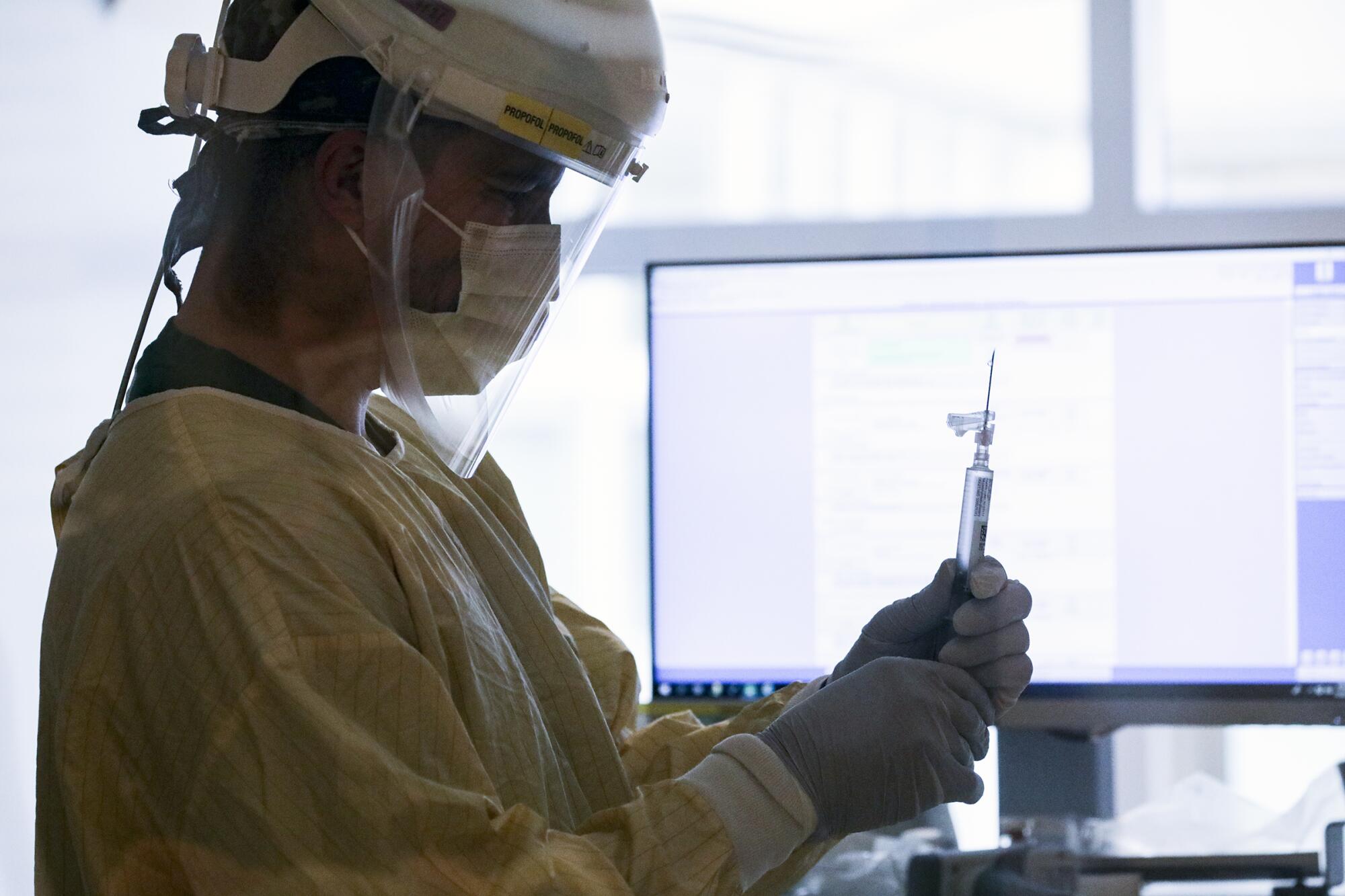
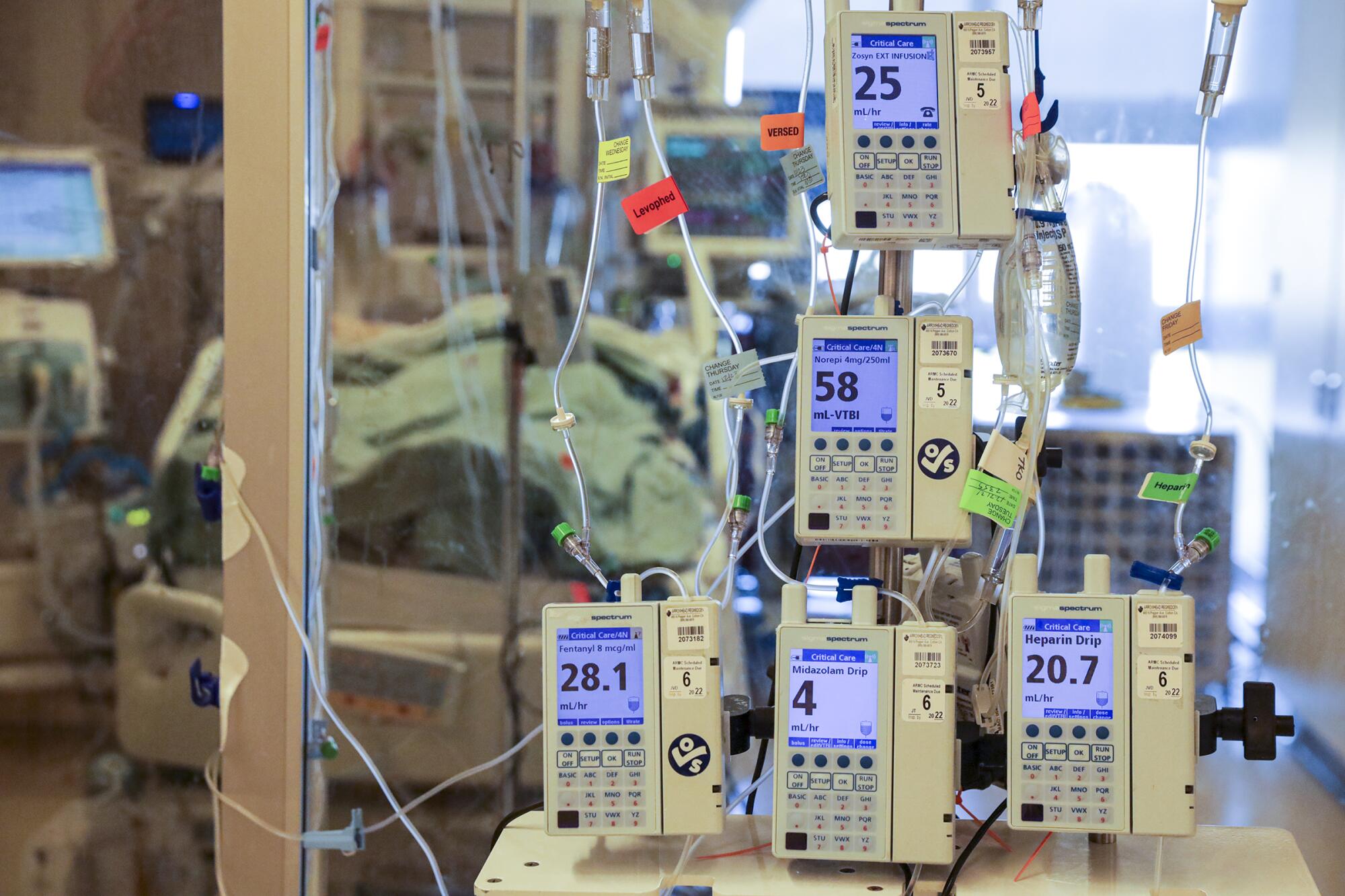
On the walls between rooms hung miniature Christmas trees and red globes that read “Merry Christmas.” The festive spirit belied the grim circumstances for patients inside.
One woman had been on the ventilator for close to two weeks and probably wouldn’t be able to come off. Hospital staff had begun talking palliative care with her family. The hospital allows visitation for COVID patients at end of life, but family members are only allowed outside of the room.
“That’s really hard for family to deal with, not being able to hold their loved one’s hand,” Koelliker said.
The 66-year-old man in the next room had recently been admitted. He was on high flow oxygen but was close to the threshold of requiring intubation. The same was true of a woman down the hall.
As Koelliker ran through the ages of each patient — in their 60s, 50s, 40s and 20s — it illustrated another trend that healthcare workers in the county have seen in the last six months: Patients are younger than they were at the beginning of the pandemic.
“Patients are still dying at an alarming rate, all unvaccinated. They haven’t stopped dying for two years. It’s hard to deal with that for so long.”
— ICU charge nurse Beth Koelliker
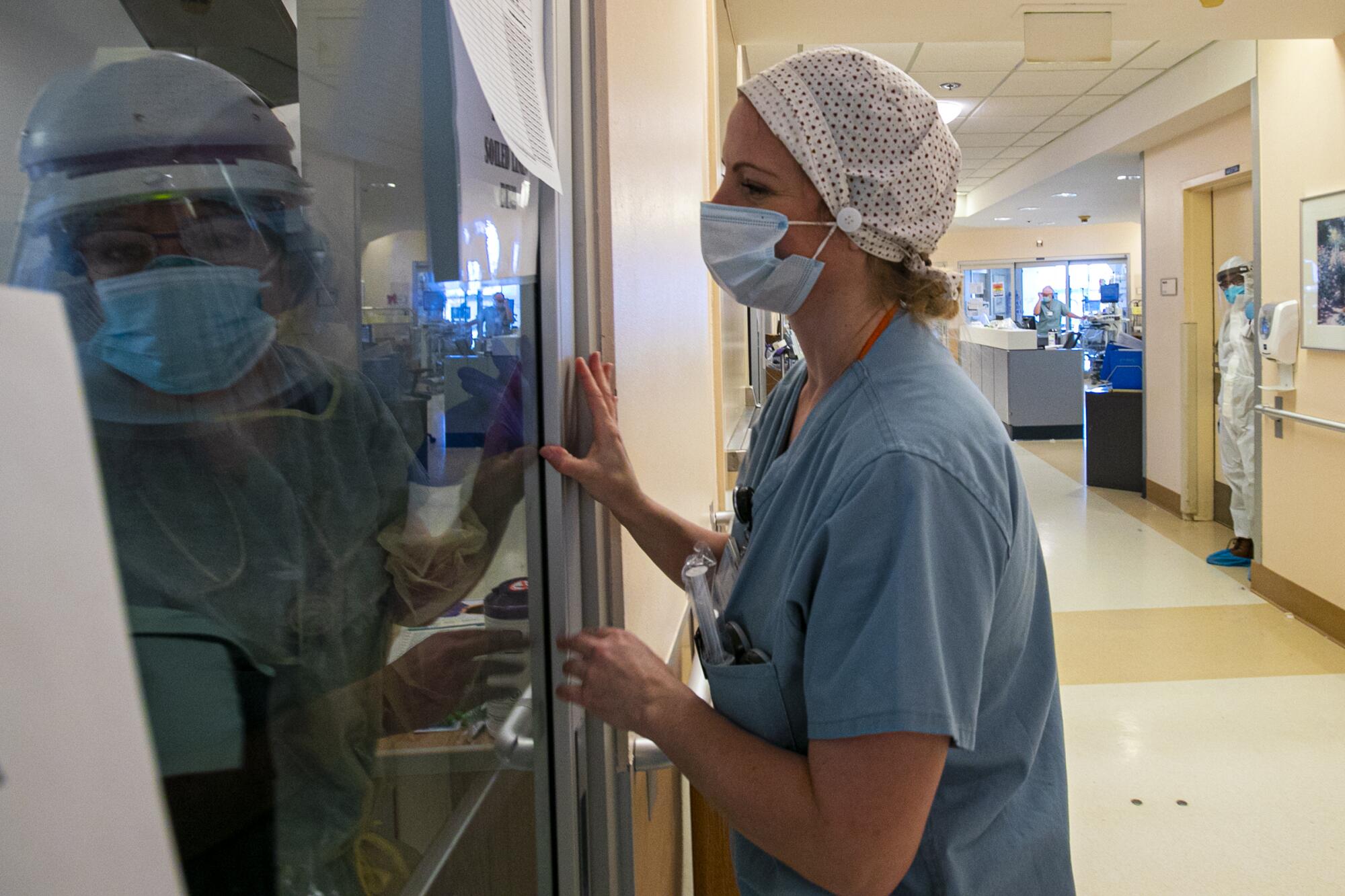
The younger they are, Koelliker said, the more likely that there are underlying diseases involved. It was rare, she said, to see a young patient “who doesn’t have other health issues going on.”
Shortly before 9 a.m., nurses — one for every two patients — administered morning medications and conducted their assessments. They wore yellow isolation gowns, white-and-gray shoe covers and controlled air-purifying respirators, known as CAPR helmets.
When beeping sounded from a room, signaling that the patient’s oxygen had dropped to 84, Koelliker peeked inside. The 44-year-old woman was not in respiratory distress and had probably just finished eating, causing the drop.
Still, Koelliker cracked the door to ask, “Doing OK?” The woman, who was not yet intubated, signaled that she was.
Right before Thanksgiving, Hernandez said, the hospital went 48 hours with no COVID patients in the ICU. After the holiday, “the numbers just started to climb,” the unit manager added.
Asked whether they were fearful of more cases coming, Koelliker said, “I know it’s coming. The winter is here.”
“We’re preparing for the worst, but expecting better,” said Hernandez, a registered nurse.
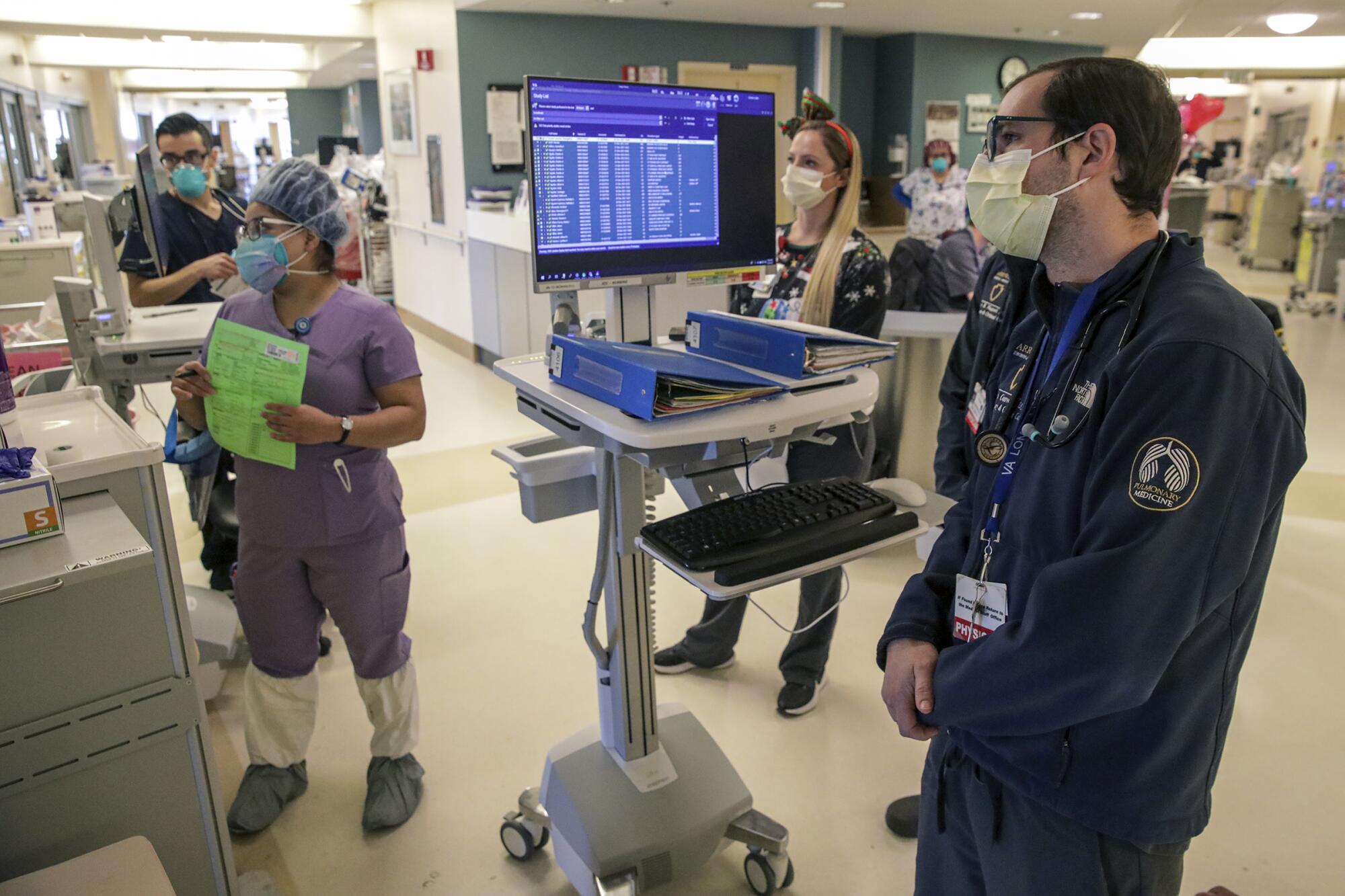
Around 10 a.m. Dr. Curtis Converse, an attending pulmonary critical care intensivist, rounded on his patients. He pulled up the chest X-ray of a patient in her 40s.
There were no major changes in her cloudy chest film, he told the staff members gathered outside of her room.
“The devastation on the lungs is pretty intense,” he said. “Unfortunately this patient is pretty young, she’s in mid-adulthood. Just very, very sick.”
Inside the room, only the top of the woman’s head was visible over her teal blanket. She lay face down in a prone position.
Some patients are kept on their bellies for 16 hours a day to help their lungs get more oxygen, Converse said. They had breathing tubes in their throat and another to urinate through, along with IVs in jugular veins.
“Critical illness with COVID is not comfortable,” Converse said.
Working in the ICU, Koelliker said, is a “balance act of keeping yourself rested, keeping your mental space open.” She had taken up hiking this year as a form of self-care.
On the first hike she did in January, she took a big breath of fresh mountain air and started to cry.
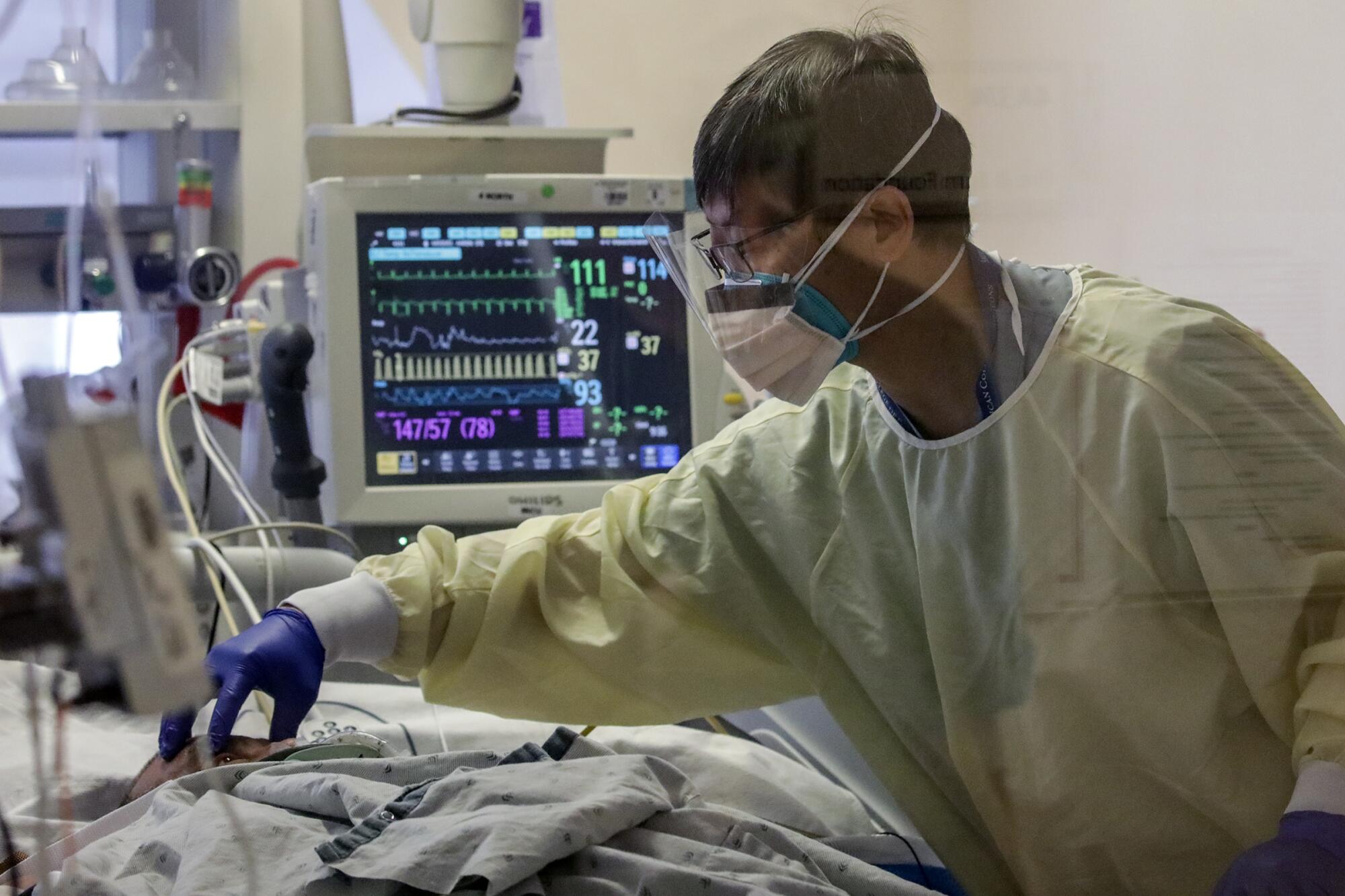
“Because I knew there were people here who couldn’t breathe or who had just died that morning or that night before and you just feel so guilty,” she said.
Koelliker recalled the patients who had died. One was a newlywed who had just married a week prior. There was a mother and son. A patient with a newborn.
The three who died on Sunday had all been unvaccinated, Koelliker said. By the time they had reached the ICU, it was too late for the vaccine to offer them any hope.
Although some patients voice regret about not getting vaccinated, others are adamant that they still won’t do so, Koelliker said.
She expressed frustration that members of her own family have also resisted getting vaccinated.
“I can see it here with my own eyes,” Koelliker said. “We’re still having patients die on us.”
“If they could see what we see,” Hernandez said.
More to Read
Sign up for Essential California
The most important California stories and recommendations in your inbox every morning.
You may occasionally receive promotional content from the Los Angeles Times.


